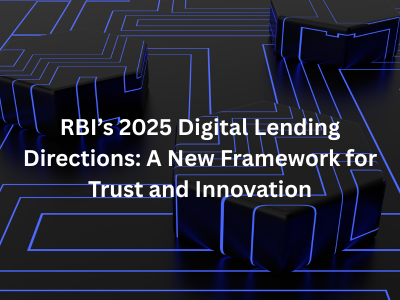The Reserve Bank of India (RBI) has issued the Reserve Bank of India (Digital Lending) Directions, 2025, which came into effect on May 8, 2025. These updated guidelines aim to regulate digital lending while fostering innovation, transparency, and financial stability.
🔹 Objective
The new framework addresses key concerns such as:
-
Mis-selling of financial products
-
Data privacy breaches
-
Excessive interest rates
-
Unethical recovery practices
It builds on the recommendations of the Working Group on Digital Lending to enhance consumer protection and systemic integrity.
🔹 Applicability
These directions apply to the following entities:
-
Commercial Banks (excluding Payments Banks and Regional Rural Banks)
-
Co-operative Banks
-
Non-Banking Financial Companies (NBFCs)
-
Housing Finance Companies
-
All-India Financial Institutions
🔹 Key Definitions
-
Digital Lending: Lending processes executed remotely and primarily through digital platforms using technology-driven mechanisms.
-
DLAs (Digital Lending Apps): Mobile or web-based applications that facilitate lending.
-
LSPs (Lending Service Providers): Agents or entities that support Regulated Entities (REs) in customer acquisition, underwriting, servicing, or recovery.
-
DLG (Default Loss Guarantee): A contractual arrangement offering up to 5% coverage of the loan portfolio against defaults.
🔹 RE–LSP Arrangements
-
REs must conduct enhanced due diligence on LSPs to assess their operational capabilities and regulatory compliance.
-
In multi-lender platforms, borrowers must receive unbiased loan options.
-
From November 1, 2025, REs must provide Annual Percentage Rate (APR) and Key Fact Statement (KFS) links upfront.
🔹 Conduct & Customer Protection
-
Borrowers' creditworthiness must be assessed using verifiable data, with appropriate digital records maintained.
-
Transparent KFS disclosures are mandatory, along with a cooling-off period of at least one day before loan execution.
-
Every RE must appoint a Nodal Grievance Redressal Officer, linked to the RBI's Complaint Management System (CMS).
🔹 Technology & Data Governance
-
Only need-based, consent-driven data collection is allowed. All data must be stored within India.
-
Biometric data must not be retained unless explicitly permitted.
-
DLAs must implement robust privacy policies to protect customer data.
🔹 Reporting & Transparency
-
All loans must be reported to Credit Information Companies (CICs).
-
All DLAs must be listed on the RBI’s Centralised Information Management System (CIMS) by June 15, 2025.
🔹 DLG (Default Loss Guarantee) Framework
-
DLGs are limited to 5% of the loan portfolio, provided in the form of cash or guarantees.
-
Revolving credit facilities and credit cards are excluded from DLG coverage.
-
DLGs must be invoked within 120 days of default.
🔹 Repeals and Continuity
These new directions supersede earlier circulars (including those dated June 24, 2020, and September 2, 2022) but preserve any regulatory actions already taken under the old guidelines.
Conclusion
The RBI’s Digital Lending Directions, 2025 mark a decisive step toward creating a safe, ethical, and innovative digital lending ecosystem in India. Regulated Entities and fintechs must now align with these standards to ensure compliance and customer trust.

